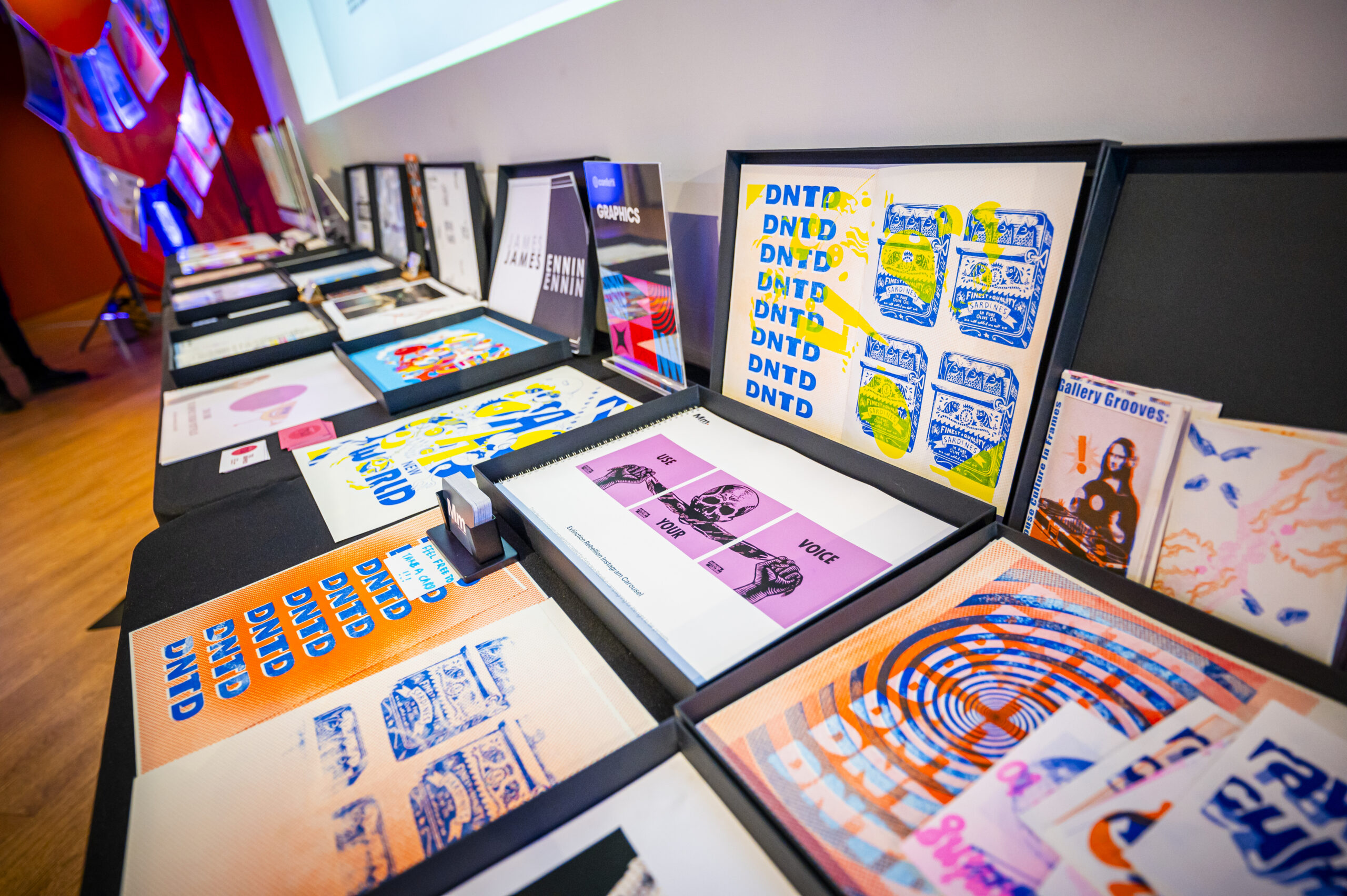Explore some of the fundamental principles that underpin good, efficient and effective graphic design. The module will introduce you to established design theory whilst exploring the application of this theory in a real-world context.
You’ll engage in research and idea development and investigate a variety of design techniques through looking at established design theory, combining this with your own experiments.
Design Techniques and Technology 1 (40 Credit Points)
With a focus on 2D graphics production software you’ll develop an understanding of physical and digital processes and make assessments of appropriateness of particular projects. You will choose appropriate tools and processes in your production of design work which responds to a chosen theme.
You’ll respond to a series of short briefs which explore the use of different tools and processes, both physical and digital.
Theory and Context 1 (20 Credit Points)
This module will explore the evolving processes and new technologies in the fast-changing world of Graphics and Digital Design and the technical issues that confront today’s graphic designers.
Working collaboratively you’ll develop research, critical discussion and presentation skills in seeking to solve a challenging design problem. You’ll develop solutions that thoughtfully consider the audience, client and market, and will collaborate as a team to generate ideas and proof of concept for a campaign.
You’ll produce an individual written research report into the role of a designer considering the contribution of modern factors vs historical work including a case study into a particular design movement, and an analysis of a design problem considering the designers relationship with audience, client and market.
Exploring Industry (20 Credit Points)
The quality of visual content plays an increasingly important role in the way we communicate to a wider range of audiences and this is the responsibility of digital graphic designers. You’ll explore the Graphics and Digital Design industry and how technology has altered the working practices of those employed within this industry.
You’ll research and develop ideas for a project driven by a client brief, developing ideas and conducting qualitative and quantitative research and producing sketchbooks and written summaries. You’ll then produce a piece of work in response to the brief.


